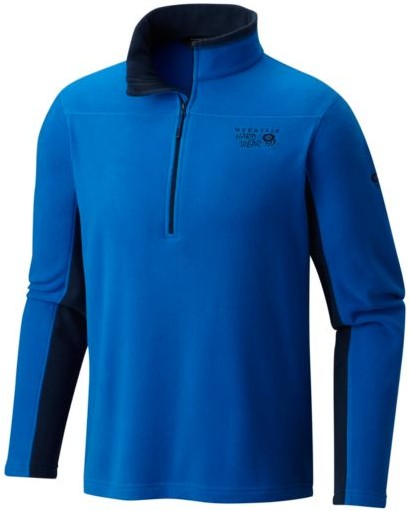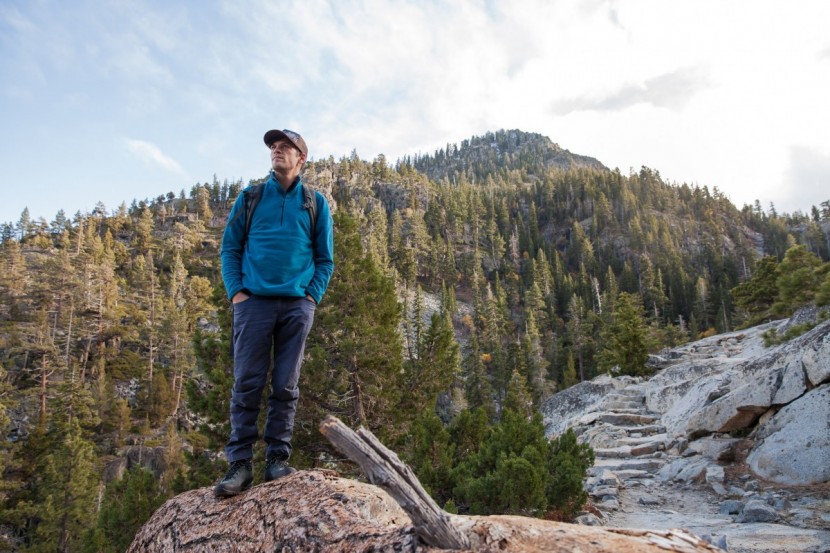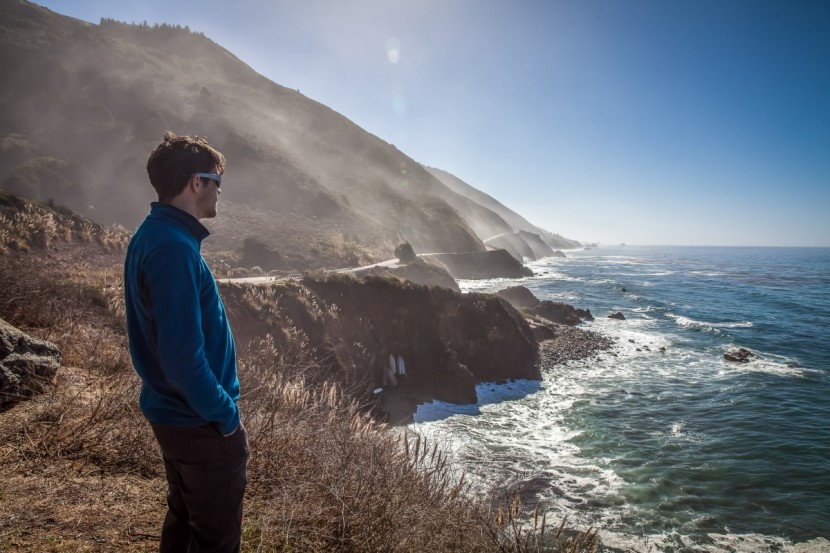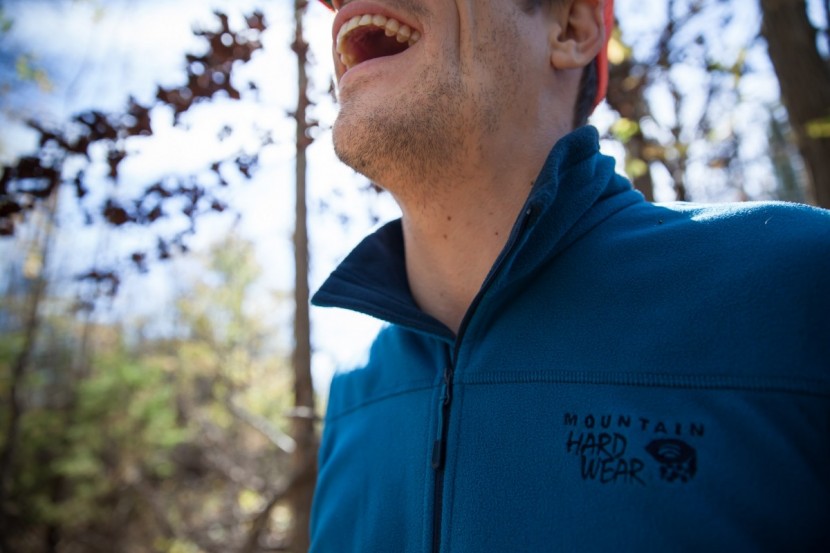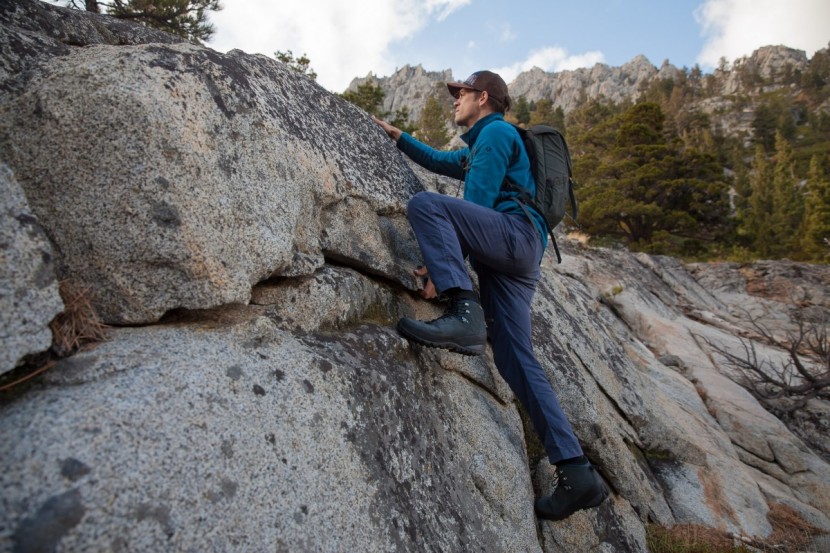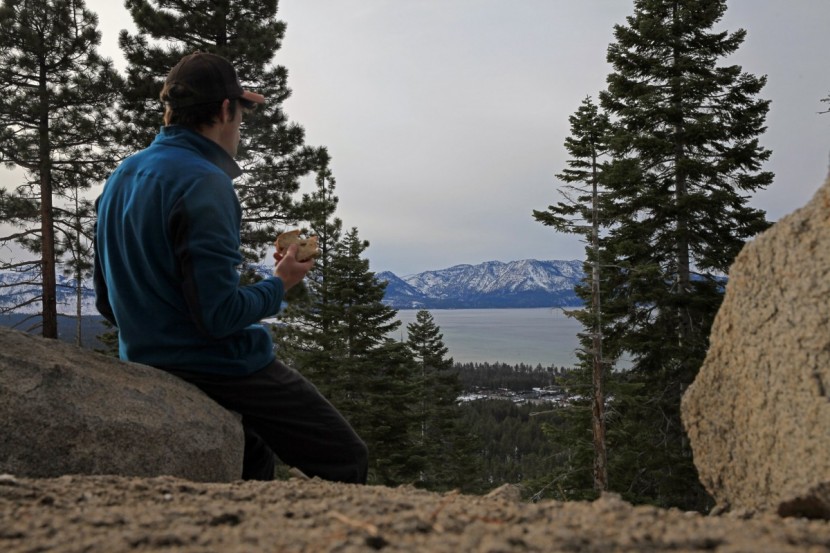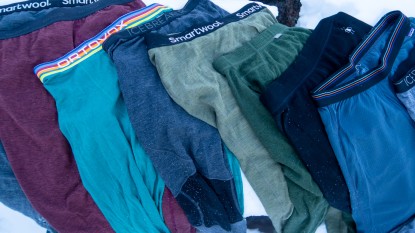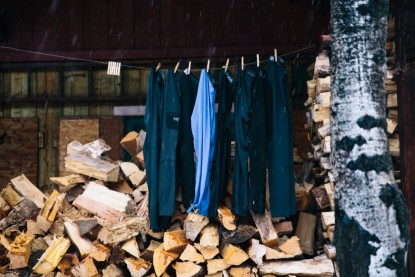Mountain Hardwear Microchill 2.0 Review
Our Verdict
Our Analysis and Test Results
The Microchill 2.0 fared the worst overall in our tests of all eleven base layers, but don't let its low score convince you that it's worthless. Although it does have several shortcomings, , this base layer provides plenty of warmth and durability to last more seasons than most. And at only $55, it doesn't hit the wallet as hard as several other products we reviewed.
Performance Comparison
Warmth
Weighing 10.3 oz, the Microchill 2.0 is heavy, which results in a lot of warmth. The fleece fabric kept us warm in some very cold, dry conditions, both next to skin and as a mid layer. The neck collar is reinforced and very warm, and behind the zipper was an extra strip of material to block air from passing through this more porous area. We appreciated this attention to detail. This top could improve its warmth with a tighter fit, though. The baggy torso and sleeves allowed cool air to move in between our skin and the shirt when untucked and therefore was unable to trap heat effectively.
Breathability
We were least impressed by this product regarding its breathability. While still much more breathable than hard shells and rain jackets, it fell behind the other base layers in this metric. When activity became more intense, our sweat frequently condensed to the inner layer of the garment. This moisture would eventually be transmitted away from our bodies, but it took longer. In our indoor workout test, it took our torsos at least ten minutes to dry under the Microchill 2.0.
Comfort and Fit
We found some positive and negative qualities of the Mountain Hardwear product within this metric. The Velous micro fleece fabric is soft to the touch and felt great (when dry) against our skin. We also liked the zipper garage that protects the neck against the cold touch of the metal zipper.
While there were no deal breakers, we did find some features that increased discomfort in this product. When zipped up, the neck becomes very stiff and somewhat unpleasant. Also, the backside of the logo on the left chest is scratchy and irritated our skin, especially when pressed firmly against the chest under the pressure of a backpack strap. Lastly, the seams of the Microchill 2.0 left clear room for improvement. It has bulky overlock seams instead of flatlock ones running up the sides of the torso and along the bottom of the sleeves. We also weren't happy to see a seam running over the top and center of the shoulder, which was again less comfortable under backpack straps.
Drying Speed
This product was slow to dry in our drying speed test, landing at the back of the pack. There was some saving grace, however. First, the Microchill 2.0 was one of the toughest synthetic models to fully saturate with water, resisting water absorption as if it thought it was made of wool. Second, the top ¾ of this base layer dried as quick as any other model in this review, as nearly the entirety of the water pooled down around the hems of the sleeves and shirt bottom. In the backcountry, this concentration of water in a smaller area would be easier to wring out to speed up the drying process.
Durability
This product is likely the most durable product featured in our review. Its fabric is very strong, and there were virtually no signs of wear, and no tear, after three months of extensive use. The Microchill 2.0 was also the least likely to get stuck on velcro, which was handy when reaching into packs and adjusting snow pants. The only potential weak spot is in the armpit, where a seam runs directly to the center of the pit, a point of frequent failure in shirts of any kind.
Layering Ability
This contender works exceptionally well as a second layer over t-shirts and other base layers of varying sizes. It could fit over any base layers in this review with ease. Many of our reviewers preferred to wear this product as a mid-layer. As the first layer under a jacket or another long sleeved shirt, this product fits too loosely. The extra material cannot avoid bunching up, which limits mobility.
Best Applications
We think this Mountain Hardwear product is best used during periods of no or light activity in cool and cold conditions when working up a sweat is unlikely. We do not recommend using it in wet, cold conditions, or during activities of higher intensity that will generate a lot of sweat. Otherwise, this product also serves as an excellent mid-layer on top of a t-shirt or another base layer.
Value
This product didn't provide great performance across the board, but it still has some value. At $55, it's an affordable top. If you're looking for a warm base layer that can double as a mid-layer at an affordable price, this could be the product for you.
Conclusion
The Microchill 2.0 by Mountain Hardwear was the only fleece in our base layer review, and we quickly discovered that it is not the fabric of choice in many circumstances. Its lack of breathability, slow drying speed, below-average comfort, and low versatility made it tough to warrant it for use in several outdoor activities. That said, the low price makes it a justifiable purchase for a limited amount of application, and it will likely outlast most other synthetic, wool, or blended fabric products.


